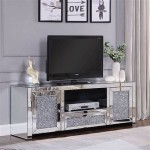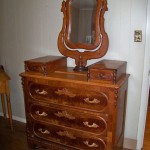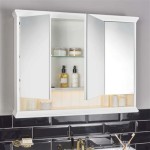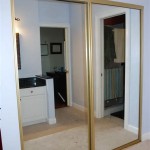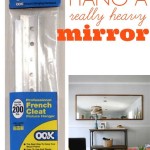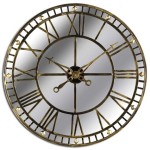Can Vanity Lights Hang Over a Mirror?
The question of whether vanity lights can hang over a mirror is a common one in bathroom design. The answer is generally yes, but with certain considerations to ensure both functionality and aesthetics are optimized. Several factors influence the best placement and type of lighting for a bathroom vanity mirror.
One crucial factor is the size and shape of the mirror. A large mirror might benefit from two smaller vanity lights flanking it, providing even illumination across the entire surface. A smaller, round mirror, on the other hand, might be well-served by a single, centrally placed fixture above. The goal is to avoid shadows and provide ample light for tasks like applying makeup or shaving.
The height of the vanity light above the mirror is another important consideration. Installing the fixture too high can result in inadequate light on the face, while placing it too low can create glare and be visually obstructive. A general guideline is to position the light 75-80 inches from the floor, assuming a standard vanity height of 30-36 inches. However, this can be adjusted based on individual needs and ceiling height.
The type of vanity light also plays a significant role in its placement over a mirror. Bar lights, which feature multiple bulbs arranged in a linear fashion, are often a popular choice for placement above the mirror. Their elongated design provides even distribution of light across a wider area. Sconces, typically mounted on either side of the mirror, offer a more traditional look but may not provide as much overall illumination. Pendant lights, though less common in bathroom settings, can be used above a smaller mirror for a more dramatic effect.
Building codes and regulations also influence the installation of vanity lights. Electrical codes dictate safe wiring practices and clearances around fixtures, particularly in damp environments like bathrooms. It is crucial to consult local building codes before undertaking any electrical work to ensure compliance and safety. Hiring a qualified electrician is always recommended for complex electrical installations.
Beyond functionality, aesthetics plays a key role in choosing and placing vanity lights. The style of the light fixture should complement the overall bathroom décor. Modern bathrooms might benefit from sleek, minimalist fixtures, while traditional bathrooms might be enhanced by more ornate designs. The finish of the fixture, whether chrome, brushed nickel, or bronze, should also coordinate with other hardware in the bathroom.
The light's color temperature is another aesthetic consideration. Color temperature is measured in Kelvins (K). Lower Kelvin values (2700K-3000K) produce a warm, yellowish light, while higher Kelvin values (3500K-4100K) create a cooler, bluish light. Warm lighting is often preferred for creating a relaxing atmosphere in bathrooms, while cooler lighting can be more suitable for tasks requiring detail, such as applying makeup.
The intensity of the light, measured in lumens, is also important. A higher lumen output indicates a brighter light. The appropriate lumen output for a bathroom vanity light depends on the size of the room and the desired level of illumination. Dimmable lights offer flexibility, allowing adjustments to the brightness level based on the time of day and the user's needs.
Maintenance and cleaning of the vanity light are other practical considerations. Fixtures placed above the mirror may be more susceptible to dust and water splashes. Choosing fixtures with easy-to-clean surfaces and designs can simplify maintenance. Regularly cleaning the fixtures helps maintain their appearance and functionality.
Placement of vanity lights involves a careful balance between function and aesthetics. While placing lights directly above the mirror is a common and often effective approach, other options, such as flanking the mirror with sconces, can also be considered. Ultimately, the best approach depends on the specific characteristics of the bathroom and individual preferences.
Reflecting on the overall design of the bathroom is crucial when choosing vanity lighting. The size of the room, the color scheme, and the style of the existing fixtures should all be considered. A cohesive design creates a harmonious and visually appealing space. Consulting with a professional designer can provide valuable insights and guidance in choosing the right vanity lighting solution.
The interplay of light and shadow significantly impacts the functionality and atmosphere of a bathroom. Careful consideration of the placement and type of vanity lighting can enhance both the usability and the aesthetic appeal of the space. By understanding the factors that influence the effectiveness of vanity lighting, informed decisions can be made to create a well-lit and visually pleasing bathroom environment.

Your Guide To Bathroom Lighting

Should Vanity Lights Hang Over Mirrors Ehomemart

Your Guide To Bathroom Lighting

How High To Place Your Bathroom Fixtures Inspired Style

How High To Place Your Bathroom Fixtures Inspired Style

Bathroom Light Fixtures Guide Lights Com

Should Vanity Lights Hang Over The Mirror Upgradedhome Com

26 Best Bathroom Lights Over Mirror Ideas Inspiration Decor

Bathroom Light Fixtures Guide Lights Com

Guide To Hanging Bathroom Vanity Lighting And Mirrors Liven Design

